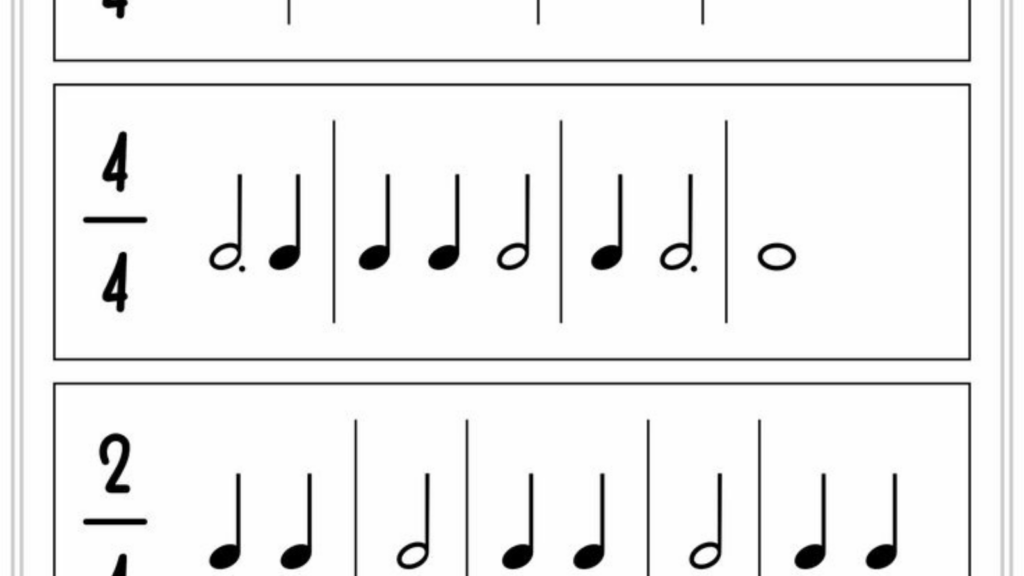Diving headfirst into the world of music can seem daunting. You’re surrounded by a dazzling array of notes, scales, and chords. But don’t fret! Understanding music theory isn’t as complex as it seems. In fact, it’s the secret language that musicians use to communicate their ideas, and it’s about to become your new best friend.
This article demystifies the basics of music theory. You’ll discover how to read sheet music, understand scales and chords, and comprehend rhythm and tempo. So whether you’re a budding Beethoven or a novice who doesn’t know a treble clef from a bass clef, stick around. You’re about to embark on a melodious journey that’ll make you see – and hear – music in a whole new light.
Music Theory 101
Next, let’s delve into the core constructs that form the bedrock of Music Theory 101. These essential components include Melody, Rhythm, and Harmony. Each plays a pivotal role in the symptom of sounds we term as ‘music’. By deepening one’s grasp over these elements, a solid foundation in music theory starts taking shape.
Introduction to Note Reading
Diving deeper into Music Theory 101, they explore Note Reading, a fundamental part. It’s a gateway to understand sheet music, enabling individuals to interpret a composer’s intentions accurately.
Elementary Music Theory: Intervals and Chords

Continuing on the Fundamental Music Theory 101 path, this section explores Intervals and Chords. Recognize Intervals as the distance between two notes—it’s a building block of Melody and Harmony. Understand Chords as three or more notes played simultaneously, following a specific pattern. Both concepts form integral parts of a musician’s vocabulary, determining the texture, color, and foundation of a piece of music. Can be daunting initially, yet with committed practice, they become instinctive to any musician.
Diving deeper into the ocean of music theory, Key Signatures and Time Signatures gain significance. They’re stepping stones in understanding the complexity and richness of music. Key Signatures, defining the scale on which a piece of music is played, guide the pitch of the composition. Equally essential, Time Signatures frame the rhythm, dictating the pattern and speed of beats. Mastery over these concepts helps musicians seamlessly transition through different musical landscapes, infusing their creativity. Unveiling these intricate elements, the article offers clarity on the rules that govern music, underlining the precision interwoven with artistry.
Practical Application of Music Theory 101
For those looking to enhance their compositions with diverse and dynamic elements, exploring top midi packs at Unison can be incredibly beneficial. These packs provide a wide range of pre-arranged melodies and harmonies that can inspire or be directly integrated into your music projects. Mastering Melody, Harmony, and Rhythm enhances the creation of original pieces, while understanding Intervals and Chords empowers adding depth to Melodies or Harmonies. Clear grasp of Key and Time Signatures in an Advanced Music Theory context facilitates complex and dynamic compositions. Lastly, proficient Note Reading sets the stage for accurate and expressive music interpretation, honouring a composer’s vision. The beauty of music theory, indeed, lies in its practicality.
Must Know

The journey through music theory 101 has been an enlightening one. It’s clear that this ‘secret language’ used by musicians is a vital tool for effective communication, creativity, and expression. Grasping the core components – melody, rhythm, harmony – and understanding the significance of intervals, chords, key and time signatures, and note reading, has the power to transform a musician’s skills. From reading sheet music to improvising and composing, music theory is the bedrock of it all. And it doesn’t stop here. There are countless resources available to continue this learning journey, to delve deeper into the fascinating world of music theory. Remember, mastering music theory isn’t just about enhancing technical skills. It’s about unlocking the full potential of musical creativity and expression.



